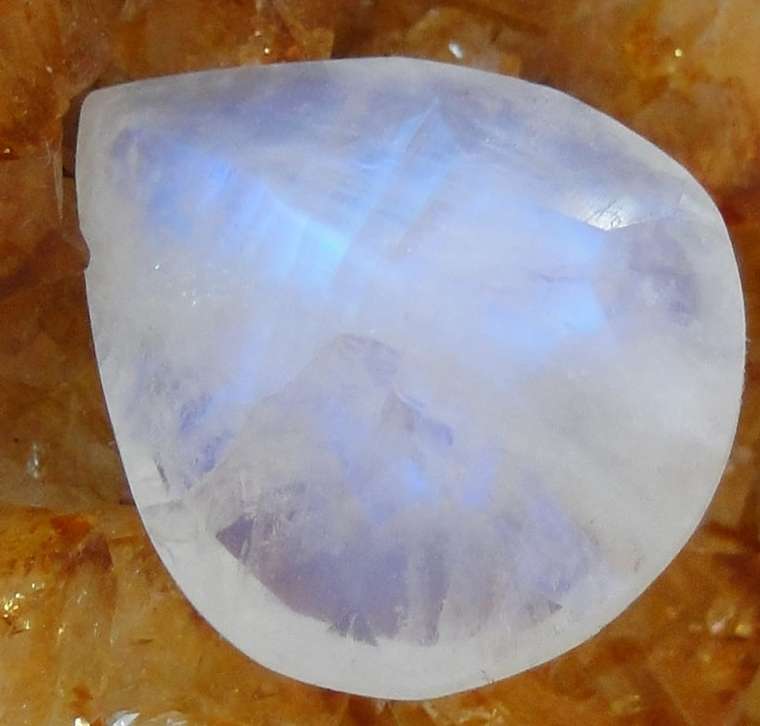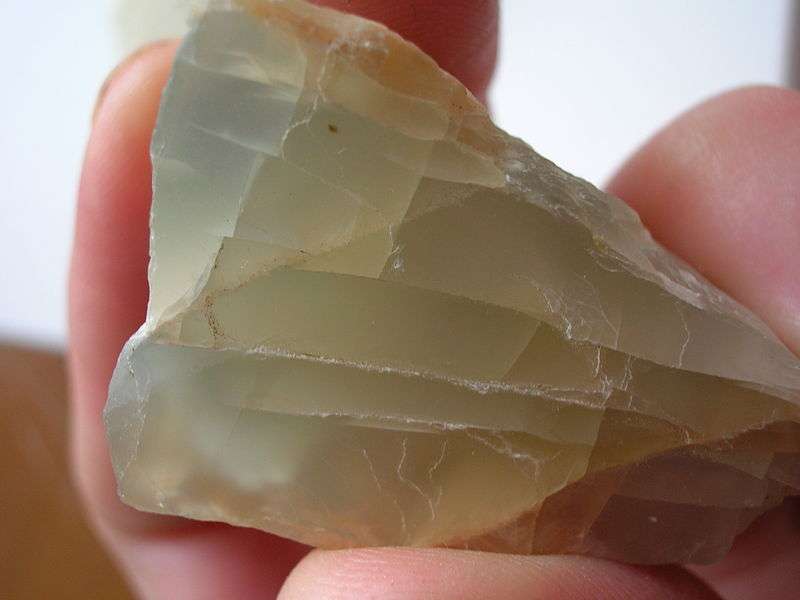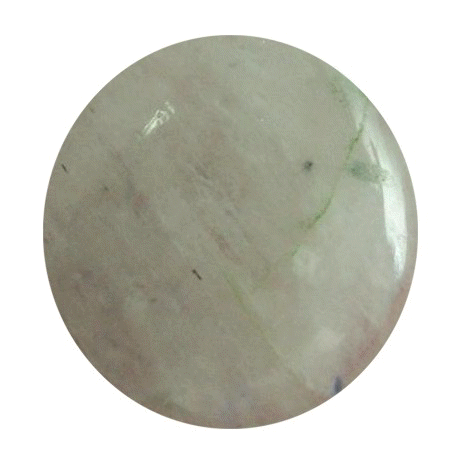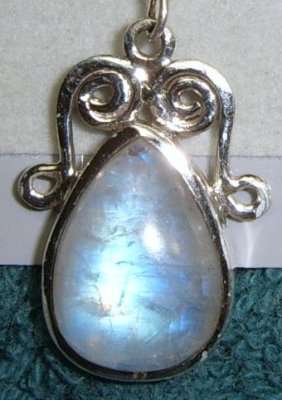It looks like you're using an Ad Blocker.
Please white-list or disable AboveTopSecret.com in your ad-blocking tool.
Thank you.
Some features of ATS will be disabled while you continue to use an ad-blocker.
2
share:

From inside the moonstone shines a beautiful soft blue light sometimes called adularescence.
Moonstones are colourless, milky white or sometimes grey or peach coloured. The prized blue - adularescence or schiller - comes from deep within the stone when viewed at certain angles. The blue is not an intrinsic mineral colour. It is instead a form of iridescence arising from multi-layer interference of light.
Moonstone is a feldspar, within the stone there are domains of alternating layers of slightly different composition.
Feldspars are complex sodium potassium aluminium silicates. Albite (sodium rich) and orthoclase (potassium rich) are compositional extremes or end members of feldspars. As a feldspar melt cools, albite solidifies first leaving an adjacent potassium rich liquid which then forms an orthoclase tending solid. That leaves an adjacent albite rich liquid. The outcome can be a regular stack of alternating layers each less than a micron thick of sodium rich and potassium rich material.
The alternating layers have slightly different optical properties and light passing through them is reflected and refracted at their interfaces. The reflected light waves interfere to produce the adularescence colours.
Read the full article at OPOD
What's moonstone?
Native moonstone:

Non-adularescent moonstone:

Adularescent moonstones:


Isn't that the same way a fire opal shines?
Gemstones for sure, they make a diamond look boring.
GM
Gemstones for sure, they make a diamond look boring.
GM
new topics
-
Bobiverse
Fantasy & Science Fiction: 2 hours ago -
Florida man's trip overseas ends in shock over $143,000 T-Mobile phone bill
Social Issues and Civil Unrest: 2 hours ago -
Former Labour minister Frank Field dies aged 81
People: 4 hours ago -
SETI chief says US has no evidence for alien technology. 'And we never have'
Aliens and UFOs: 6 hours ago -
This is our Story
General Entertainment: 9 hours ago -
President BIDEN Vows to Make Americans Pay More Federal Taxes in 2025 - Political Suicide.
2024 Elections: 11 hours ago
2
